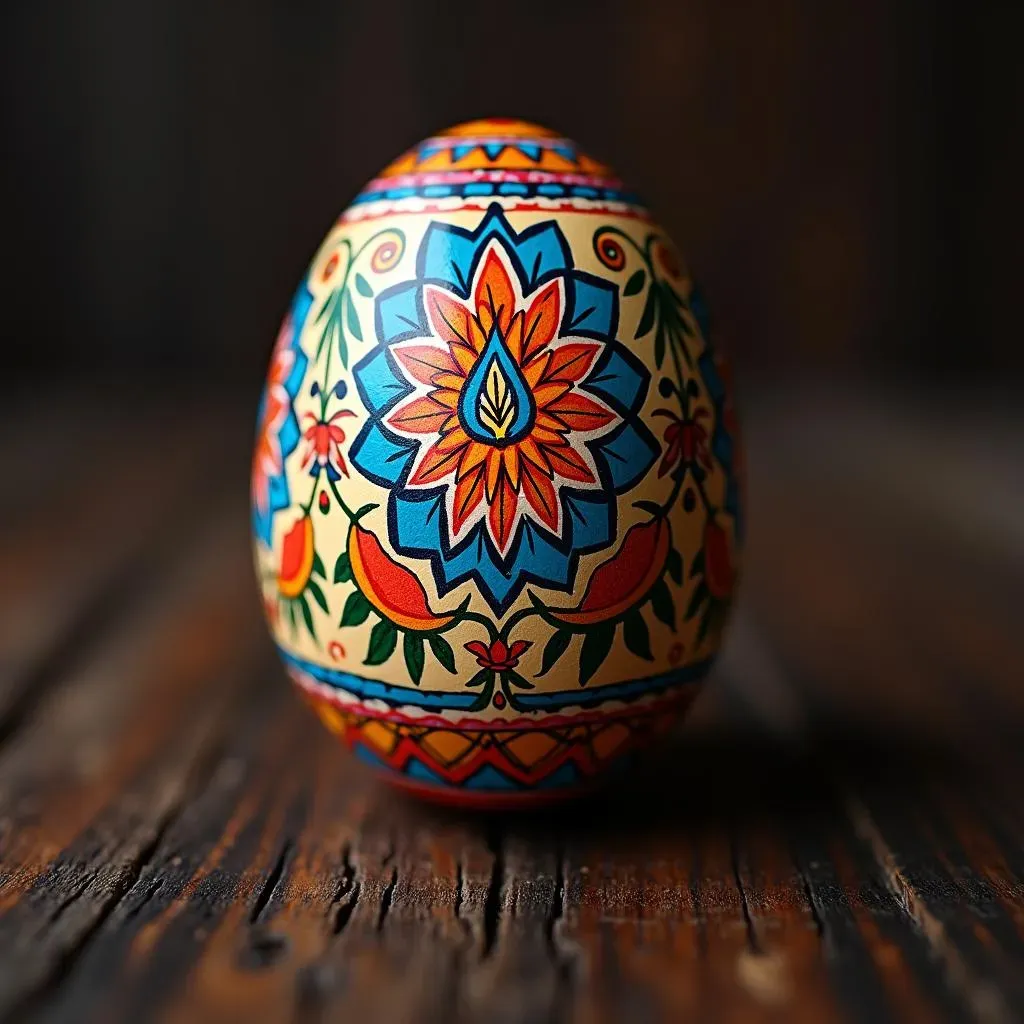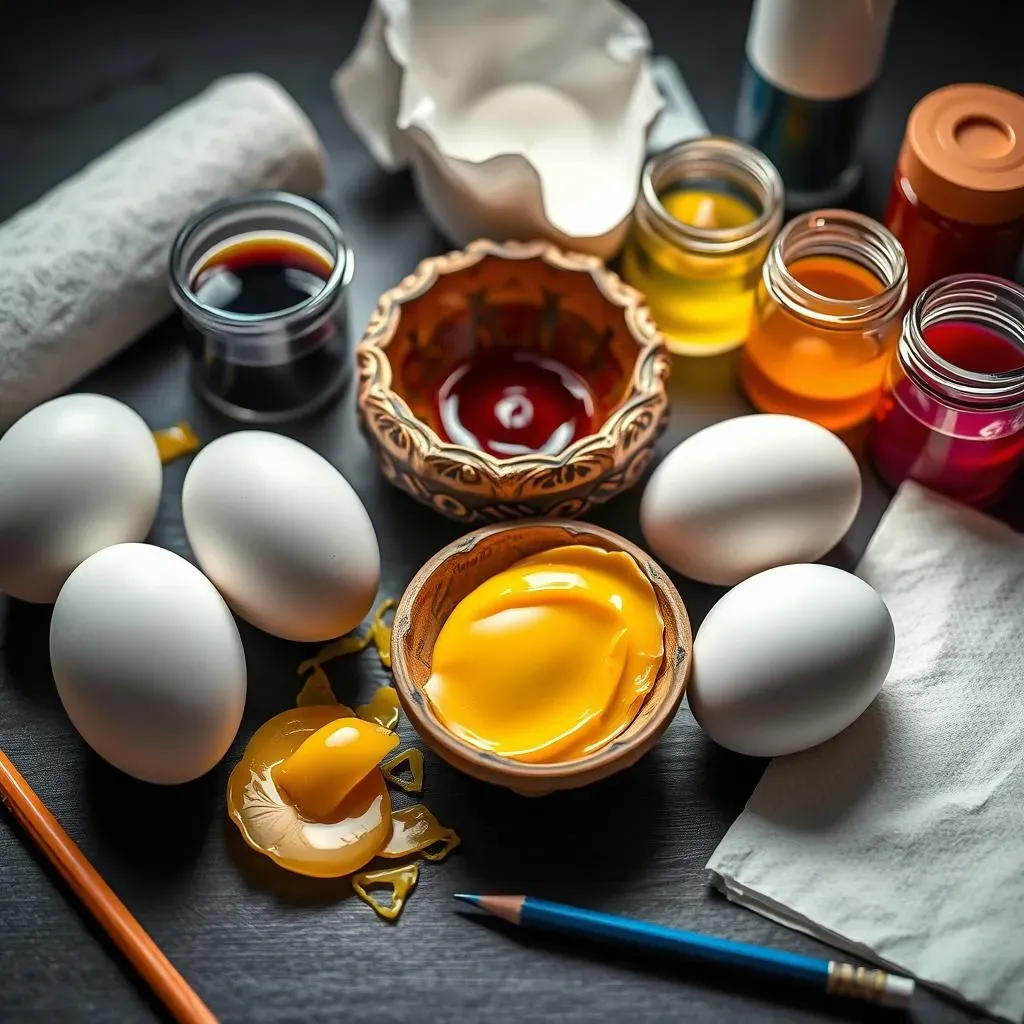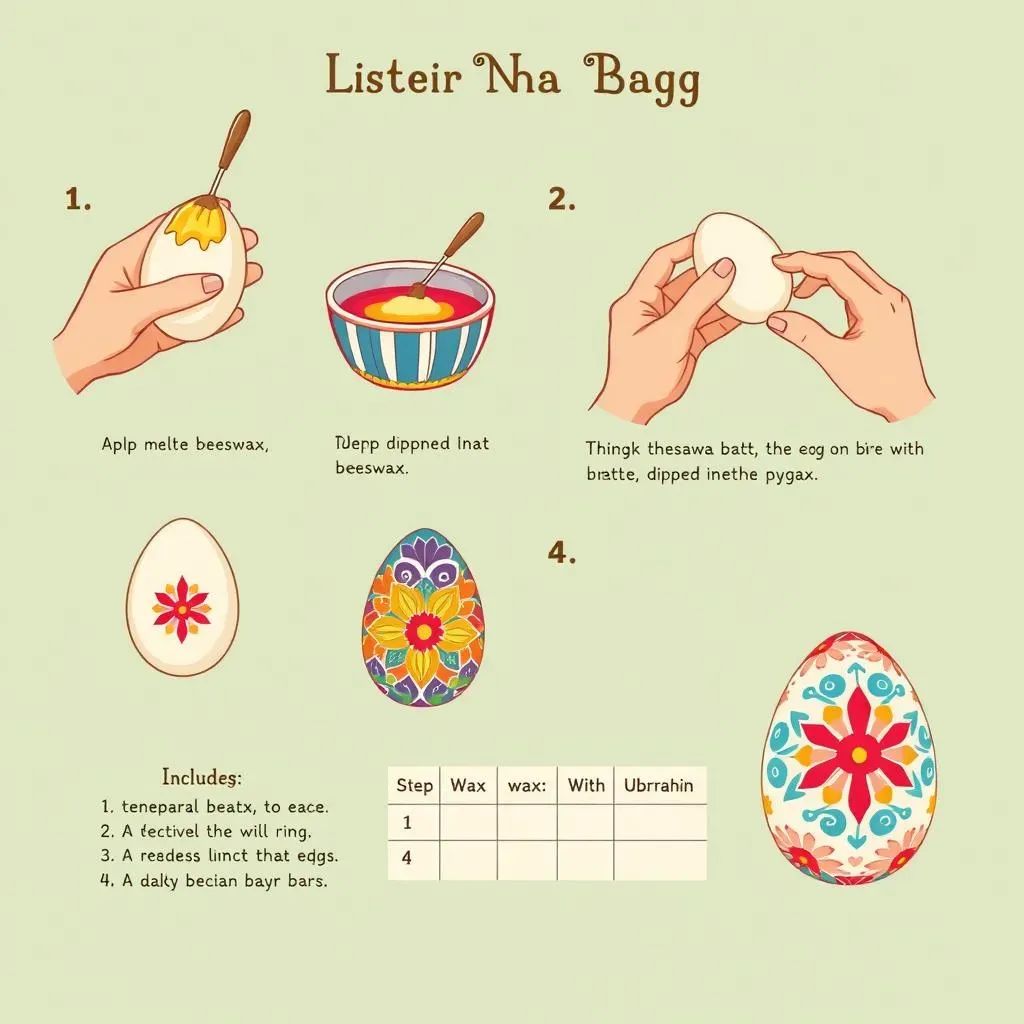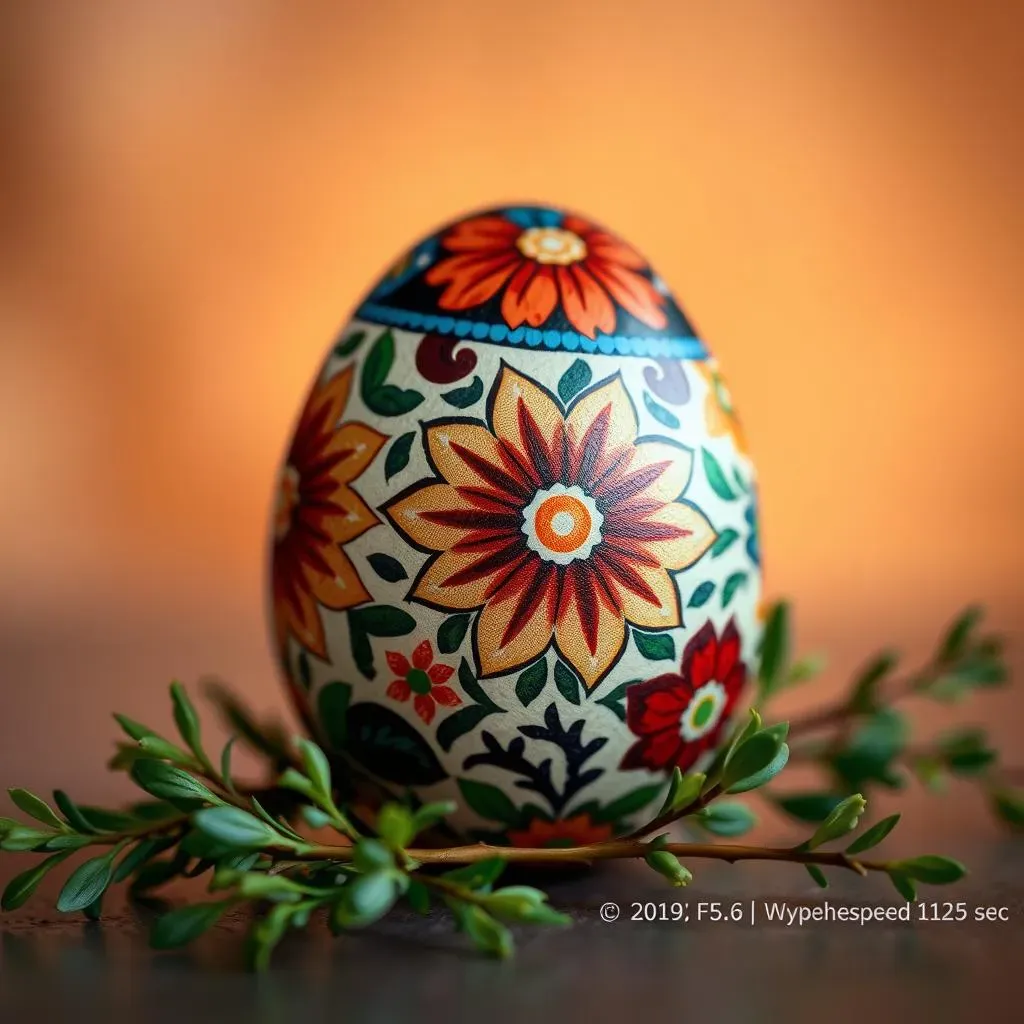Table of Contents
Have you ever seen an Easter egg so beautiful it looked like it belonged in a museum? That's the magic of pysanky, the art of decorating Ukrainian Easter eggs. These aren't your average dyed eggs; they're small masterpieces, each telling a story with intricate patterns and vibrant colors. Imagine creating your own, turning a simple egg into a symbol of hope, love, and tradition. This article will guide you through the fascinating world of pysanky, explaining the history, the tools, and the techniques you need to get started. We'll explore the symbolic meanings behind the designs, making your egg decorating journey not only fun but also deeply meaningful. From gathering your supplies to mastering the wax-resist method, we'll break down each step, ensuring even beginners can create stunning Ukrainian Easter eggs. So, are you ready to embark on this creative adventure? Let's get started with decorating Ukrainian Easter eggs!
The Art of Pysanky: Understanding Ukrainian Easter Egg Decorating
The Art of Pysanky: Understanding Ukrainian Easter Egg Decorating
What Exactly is Pysanka?
Okay, so you've heard about these Ukrainian Easter eggs, right? They're not just painted; they're *written* with wax. That's what "pysanka" means—"to write." It's like using a tiny pen that drips hot wax instead of ink. Imagine drawing on an egg with a crayon, then dipping it in dye. The wax protects the areas you drew, and when you remove the wax, you're left with a design. Pretty neat, huh? This isn't a new thing, either. People have been making pysanky for centuries, way before even the coolest video games were invented.
It's a tradition passed down through families, a kind of secret language written in symbols and colors. Each line, each shape, has a meaning, making each egg a unique story. It’s not just about pretty patterns, it's about carrying on a tradition that has deep roots in Ukrainian culture. It's like having a tiny, egg-shaped history book.
A History Rich in Symbolism
These eggs aren't just for Easter; they have a history linked to pagan beliefs, celebrating spring and the sun. The symbols weren't just random doodles. They were prayers, wishes, and messages for good health, fertility, and protection. Think of it like sending a text message, but on an egg and to the universe. When Christianity came to Ukraine, these symbols were folded into the new faith, with some taking on Christian meanings. For example, the triangle, which could have meant something different in ancient times, is now said to represent the Holy Trinity. It's like symbols have a secret second life, changing with the times.
The designs weren't just pretty, they were a way of communicating with the world, like the original emojis. Different regions had their own styles, too, like different dialects in a language. It is fascinating how something so simple can carry so much history and meaning.
Symbol | Meaning |
|---|---|
Sun | Life, warmth, and growth |
Stars | Guidance and heavenly connection |
Flowers | Love, beauty, and nature |
Birds | Good luck and messengers of spring |
Why Bother with Pysanky?
Okay, I know what you might be thinking: why go through all this trouble when you can just buy a chocolate egg? Well, the answer is simple. Pysanky is more than just decorating; it's about connecting with a culture, creating something beautiful with your own hands, and learning a new skill. It's like learning to play an instrument; it takes practice, but the result is so rewarding. Plus, when you give a pysanka as a gift, it's not just an object; it's a piece of art, a piece of history, and a piece of your heart. It's like giving someone a tiny, egg-shaped hug.
It’s a way to unplug from the digital world and make something real. And let's be honest, who doesn't love showing off something they made themselves? It’s a bit like having a secret superpower that involves wax, dye, and a whole lot of patience. It is a great tradition to get into.
Gathering Your Supplies for Decorating Ukrainian Easter Eggs
Gathering Your Supplies for Decorating Ukrainian Easter Eggs
The Essential Tools You'll Need
Alright, so you’re ready to start decorating Ukrainian Easter eggs? Awesome! But before you jump in, you gotta gather your gear. It’s like getting your tools ready before building a Lego castle. First up, you’ll need some eggs, obviously. White eggs work best because they make the colors pop. Then, the real magic comes with the kistka, that's the tool we use to apply the wax. It's like a tiny funnel with a fine tip, and it's what allows you to "write" those intricate designs. You'll also need some beeswax, which is what you melt to put on the egg. And of course, you can’t do this without dyes. We need special aniline dyes for that bright color.
Don't worry, you don't need to be a chemist to use them. They come in powder form, and you mix them with water and vinegar. You’ll also need some jars or containers for the dyes, and some paper towels to clean up any spills. I mean, let's be real, spills are going to happen. Don't forget a pencil, for sketching out your design before you start with the wax, and a candle or a wax melter to keep your beeswax liquid. It may sound like a lot, but once you have everything set up, it's really quite simple.
Supply | Why You Need It |
|---|---|
White Eggs | For the colors to show up well |
Kistka | To apply wax and create designs |
Beeswax | The wax to protect parts of the egg from dye |
Aniline Dyes | To give the eggs their vibrant colors |
Candle or Wax Melter | To melt the beeswax |
Pencil | For sketching out your designs |
Where to Find Your Supplies
Now that you know what you need, where do you get all this stuff? You can check out craft stores for the basic supplies like eggs, beeswax, and containers. For the kistka and aniline dyes, you might want to look at specialty art stores or online shops that focus on egg decorating supplies. There are many places that offer pysanky kits, which are great for beginners because they include everything you need in one box. It saves you the hassle of finding each item individually. It's kind of like getting a starter pack for a video game, everything is ready to go.
You don't have to get the most expensive stuff to start, though. Especially if you're just trying it out. Look for basic kistkas and small amounts of beeswax to see if you enjoy the process. I always recommend starting with a kit, but I also love supporting local craft stores. And hey, you can even ask around to see if any friends have some supplies they're willing to share, it's always good to ask. Just make sure everything is clean and ready to go, you don't want any random stuff messing up your pretty eggs. The most important thing is to have fun and be ready to get creative.
StepbyStep Guide to Decorating Ukrainian Easter Eggs
StepbyStep Guide to Decorating Ukrainian Easter Eggs
Preparing Your Egg
Alright, let's get to the fun part! First things first, you need to prep your egg. It's like getting your canvas ready before painting. Start by washing your egg with some soap and water, and make sure to dry it really well. You don't want any water messing with your wax later on. Now, if you're a perfectionist, you can lightly draw your design on the egg with a pencil. I usually sketch out some basic guidelines, but I also sometimes just go with the flow. Remember, there are no mistakes in art, just happy accidents! It's about having fun, not stressing over perfect lines. It's like doodling, but on an egg.
Once your egg is clean and dry, and you've sketched out your design (or not!), you're ready to start with the wax. Make sure your beeswax is melted and your kistka is ready to go. It's important to have your workspace set up so everything is within reach and you don't have to go scrambling for tools while holding a hot kistka. Safety first, you know! Take a deep breath, and let's get started with the real magic.
Applying the Wax and Dye
Now, for the main event: applying the wax. Dip the tip of your kistka into the melted beeswax, and gently start tracing your design. The wax will create a barrier that prevents the dye from coloring the egg in those areas. It’s like creating a tiny, waxy fortress on your egg. Start with the lightest color you want on your egg, usually white or yellow. Once you're done with the first layer of wax, it's time to dye the egg. Carefully place the egg in the dye bath and let it sit for a while. The longer it sits, the deeper the color will be. It’s like brewing tea, but with eggs.
After the first dye, take the egg out and let it dry, then you'll start adding more wax to the areas you want to keep that color and dye it again with the next color. You’ll repeat this process with each color, working from lightest to darkest. It's like building layers, each one adding to the beauty of the egg. When you are done adding your last color, it's time to take all the wax off to reveal the full design. It's like unwrapping a present and seeing all your hard work come to life. It's so satisfying!
Step | Action |
|---|---|
1 | Wash and dry the egg |
2 | Sketch design (optional) |
3 | Apply wax to areas you want to keep white |
4 | Dye the egg with the lightest color |
5 | Apply wax to areas you want to keep that color |
6 | Dye the egg with the next color |
7 | Repeat steps 5 and 6 until all colors are applied |
8 | Remove the wax to reveal the final design |
Exploring Pysanky Designs and Their Meanings
Exploring Pysanky Designs and Their Meanings
Geometric Patterns: The Basics of Pysanky
Alright, so you've got your egg, your wax, and your dyes, and now you're wondering, "What do I even draw?" Well, let's start with the basics: geometric patterns. These are the building blocks of pysanky, and they're way more interesting than they sound. Think of them as the ABCs of egg design. You've got your straight lines, your wavy lines, your spirals, your triangles, your squares – all these simple shapes can be put together in endless combinations. It's like playing with Lego, but on an egg. Each shape has its own little meaning, too. A straight line can mean life, while a spiral can represent the passage of time. It’s like learning a secret code, where each shape has a special meaning.
Don't feel like you need to be a math genius to get this, though. The beauty of geometric patterns is that they're simple and easy to work with, but they can also be super complex and intricate, depending on how you arrange them. It's like a puzzle, where you're the one who gets to decide how the pieces fit together. It's all about having fun and seeing what you can create with these basic building blocks. You can even combine different patterns to create your own unique design. Let your imagination run wild!
Floral and Plant Motifs: Nature's Touch on Pysanky
Now that you've got the geometric patterns down, let's bring in some nature! Floral and plant motifs are super popular in pysanky designs. Think of flowers, leaves, vines, and even whole trees. It's like taking a walk in a garden and then drawing it on an egg. These designs are not just pretty; they carry a lot of meaning. Flowers can represent love, beauty, and new beginnings, while leaves can symbolize growth and prosperity. It's like having a tiny, portable garden that you can admire.
You'll see all sorts of plants used in pysanky, like wheat, which represents a good harvest, and oak leaves, which symbolize strength. Every region in Ukraine has its own favorite flowers and plants that they like to use. It is like having a unique signature, each region has its own style, its own way of showing love for nature. It's really fascinating how the natural world inspires these designs, and it's a great way to bring a little bit of nature into your own home. And hey, it's a good excuse to go for a walk in the park and get some inspiration!
Motif | Meaning |
|---|---|
Oak Leaves | Strength and power |
Wheat | Good harvest and prosperity |
Flowers | Love, beauty, and new beginnings |
Vines | Continuity and connection |
Animal Symbols: Creatures Great and Small
Last but not least, let's talk about the animals! Pysanky are not just about plants and shapes; they also feature a lot of cool creatures. You'll see birds, fish, deer, horses, and even insects. Each animal has its own symbolic meaning, too. Birds, for example, are often seen as messengers of spring and good luck, while fish can represent faith and Christianity. It's like having your own little Noah's Ark on an egg. The animals used often reflect the local wildlife of the region, too. It's a way of showing how people are connected to the animals around them.
Think of it like having a mini-zoo on an egg, each animal with its own unique story. You don't have to be a zoologist to appreciate these symbols, though. Just let your imagination run wild and see what creatures you can bring to life on your pysanky. The best part is that you can mix and match different elements to create your own unique design. It’s your egg, so you make the rules! Just have fun and see what amazing things you can create with wax, dye, and a little bit of creativity!